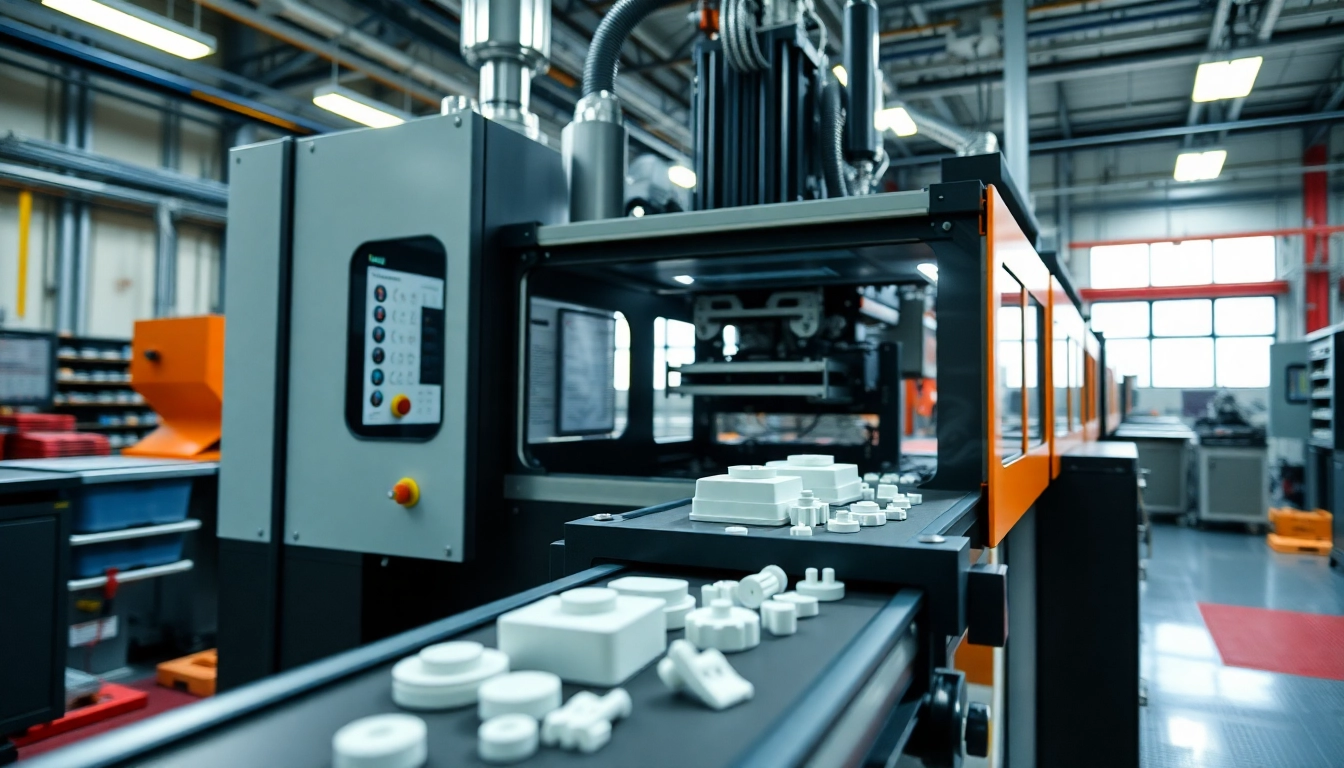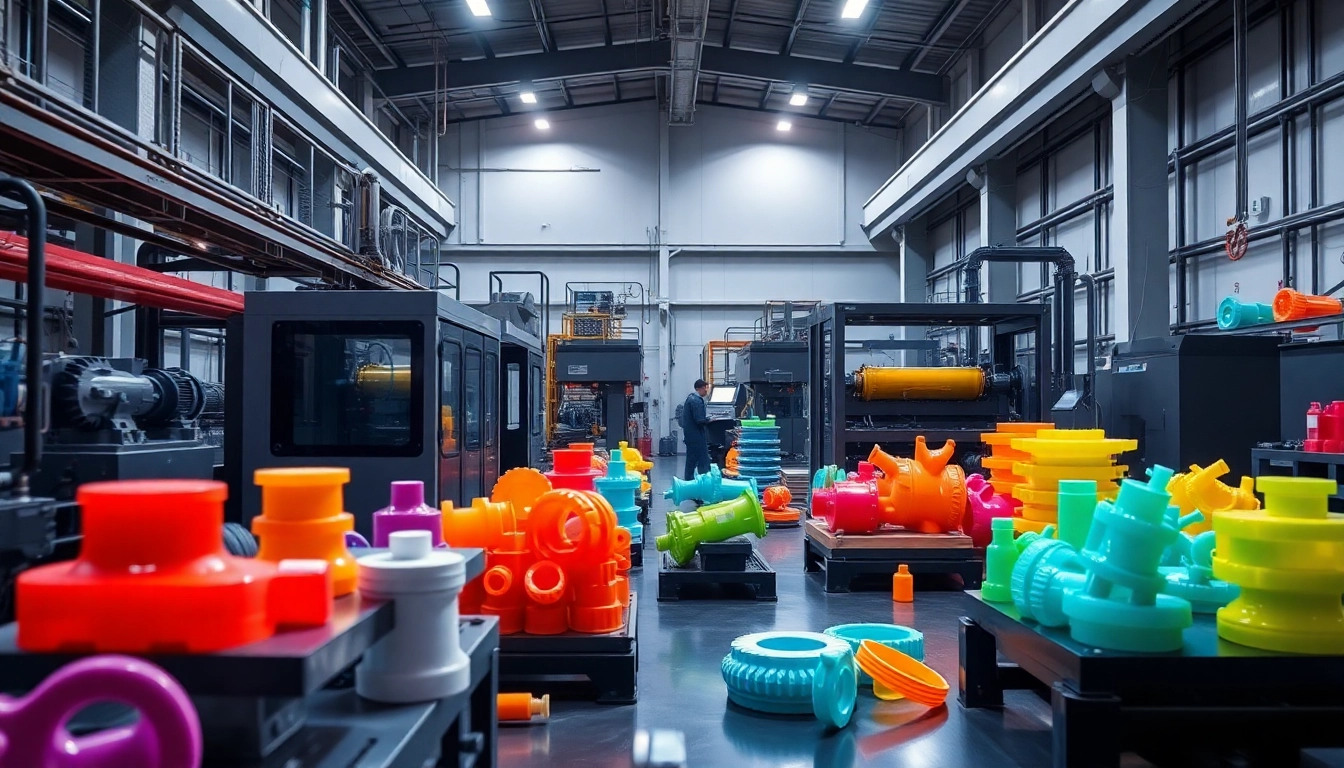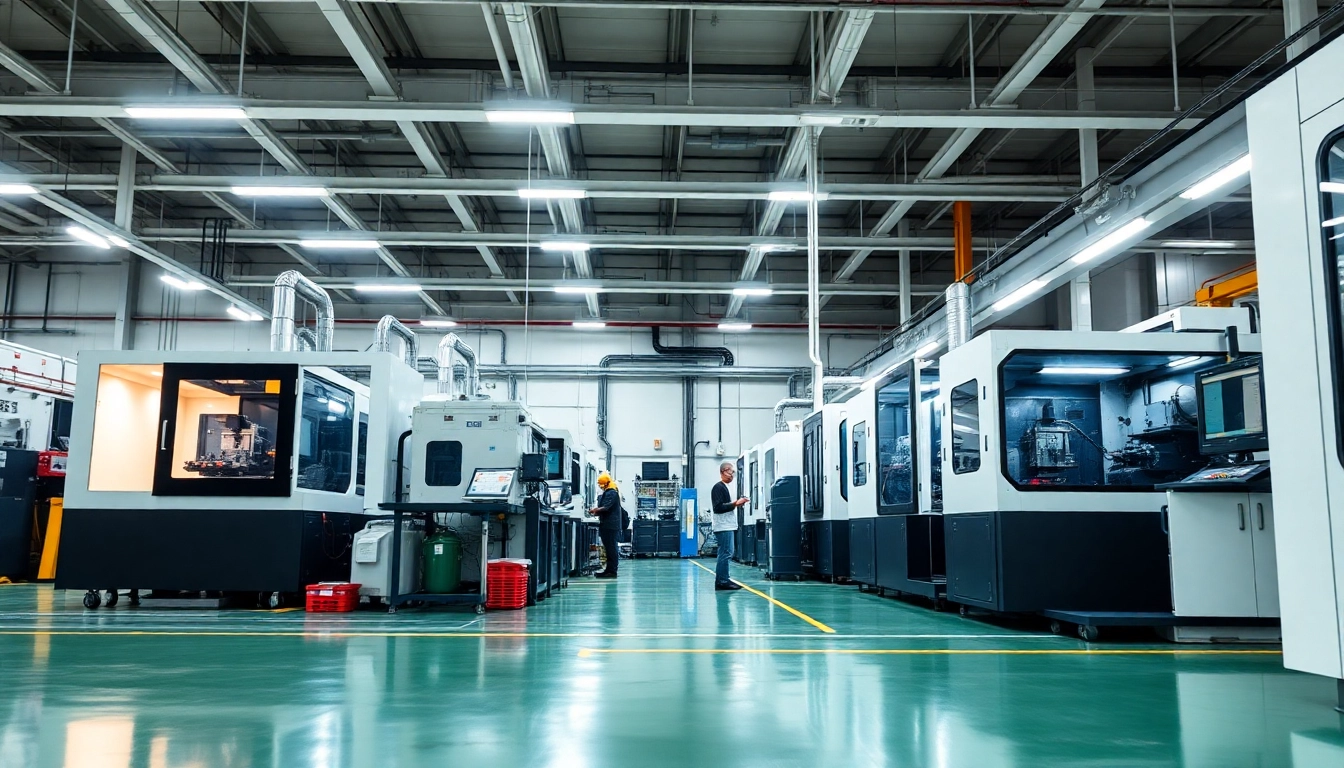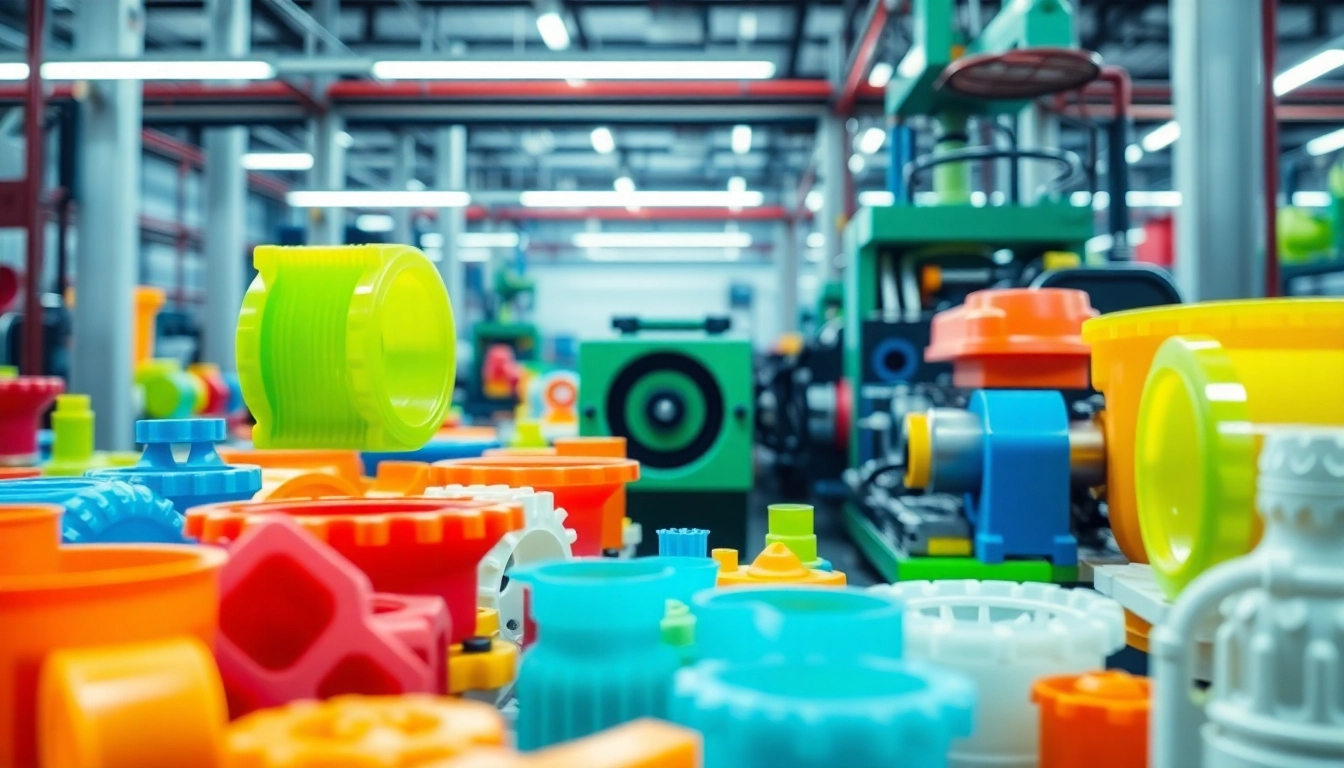Understanding Injection Molded Parts
What Are Injection Molded Parts?
Injection molded parts are components manufactured through the injection molding process, a highly efficient and versatile method used to create products from plastic and other materials. This process involves the injection of molten material into a mold where it cools and solidifies into the desired shape. The resulting parts are known for their high precision, repeatability, and the ability to produce complex geometries that are difficult to achieve with other manufacturing techniques. Common applications for injection molded parts range from everyday consumer goods to specialized industrial components.
The popularity of injection molded parts stems from their cost-effectiveness in mass production, allowing for lower unit costs as production volumes increase. This is achieved by creating a mold that can be used repeatedly, thereby amortizing the initial cost of the mold across thousands of parts.
The Injection Molding Process Explained
The injection molding process comprises several key stages: material preparation, injection, cooling, and part ejection. The process begins with the selection of suitable thermoplastic or thermosetting materials, which are then fed into a hopper. These materials are heated in a barrel until they melt, becoming a viscous liquid capable of being easily injected into a mold.
During injection, the molten material is forced into the mold cavity under high pressure. This pressure ensures that the material fills every corner of the mold, capturing intricate details and textures. Once the cavity is filled, the material is allowed to cool and solidify. After sufficient cooling, the mold is opened, and the finished part is ejected, ready for further processing or packaging.
Key advantages of the injection molding process include rapid production rates, high dimensional accuracy, and the ability to create parts with outstanding surface finishes. These characteristics make it a preferred method across various industries, including automotive, consumer products, medical devices, and electronics.
Common Materials Used in Injection Molding
Various materials can be employed in injection molding, each offering unique properties suited to specific applications. The most common materials include:
- Thermoplastics: Such as ABS, polycarbonate, and nylon. These materials can be reheated and reshaped, making them highly versatile.
- Thermosets: Materials like epoxy and phenolic resins which, once cured, cannot be remelted. These materials generally offer excellent heat and chemical resistance.
- Elastomers: Rubber-like materials that provide flexibility and resilience, commonly used in applications requiring a degree of elasticity.
- Biodegradable Plastics: Innovative materials designed to minimize environmental impact, increasingly popular in consumer products.
Choosing the right material for injection molding is critical, as it affects not only the performance characteristics but also the manufacturing costs and sustainability of the product.
Design Considerations for Injection Molded Parts
Key Design Principles for Moldability
Effective part design for injection molding is pivotal for ensuring manufacturability and functionality. Key principles include:
- Draft Angles: Slight angles on vertical surfaces make it easier for the molded part to be ejected from the mold.
- Wall Thickness: Consistent wall thickness ensures uniform cooling, reducing the risk of warping and defects.
- Radii and Fillets: Using rounded edges minimizes stress concentrations and improves flow during injection.
- Features and Tolerances: Designing features that accommodate tolerances based on the material and stringency of application is vital.
Collaboration with mold designers during the early stages of development can lead to enhanced part designs and better productivity outcomes.
The Importance of Wall Thickness in Injection Molding
Wall thickness is a crucial aspect of injection molded part design, influencing both the integrity and performance of the final product. A general rule of thumb is to maintain uniform wall thickness to promote even cooling rates. Parts with varying wall thicknesses can lead to defects such as warping, sink marks, and inconsistent material properties.
Typically, wall thickness ranges from 1 mm to 5 mm, depending on the type of plastic used and the part’s function. Thicker walls may be necessary for high-load applications, while thinner walls reduce material costs and weight. However, when designing thicker sections, consideration must be given to how the part will cool and the possible need for support structures.
Design Software for Injection Molded Parts
Advanced design software plays a pivotal role in the successful production of injection molded parts. Tools like AutoCAD, SolidWorks, and CATIA allow engineers to create detailed 3D models that can simulate the injection molding process, identifying potential issues—such as filling and cooling problems—before production begins.
Utilizing computer-aided design (CAD) software can significantly decrease prototyping times and costs. Some programs even offer analysis tools to predict how variations in design will affect manufacturability, flow rates, and thermal characteristics.
Applications of Injection Molded Parts Across Industries
Consumer Goods and Household Items
Injection molded parts are ubiquitous in consumer goods, from small household items to large appliances. Common products include:
- Plastic containers and lids
- Household utensils
- Toiletries and personal care items
- Electronics housings, like remote controls and smartphones
The ability to produce complex and aesthetically pleasing shapes makes injection molding an ideal choice for these products.
Automotive Components and Innovations
The automotive industry relies heavily on injection molded parts for manufacturing components that must withstand varying environmental conditions and mechanical stresses. Common applications include:
- Dashboard components
- Interior trim pieces
- Battery housing and other enclosures
- Headlight and taillight covers
As car manufacturers push for increased efficiency and reduced weight, advances in materials and manufacturing techniques are vital. Lightweight, high-strength plastics are now being developed to meet these demands, showcasing the potential for innovation in automotive applications.
Medical Devices Utilizing Injection Molded Parts
The precision and reliability of injection molded parts make them indispensable in the medical industry. Medical devices, such as:
- Syringes
- Drug delivery pumps
- Diagnostic equipment housings
- Single-use components and instruments
must adhere to stringent regulatory standards. The ability to inject mold complex geometries ensures that the devices not only meet functional requirements but also comply with safety and hygiene regulations.
Challenges in Manufacturing Injection Molded Parts
Common Defects in Injection Molding
Despite its efficiency, the injection molding process is not without challenges. Common defects include:
- Flash: Excess material around the parting line, often due to insufficient clamping force.
- Sink Marks: Indentations on the surface caused by shrinkage during cooling.
- Short Shots: Incomplete filling of the mold cavity, often due to inadequate material or improper injection speed.
Understanding these defects can help manufacturers identify root causes and implement corrective measures to enhance productivity and quality.
Cost Considerations in Production
The cost of producing injection molded parts is influenced by various factors, including material pricing, mold complexity, production volume, and labor costs. While the initial investment in mold making can be significant, it is often balanced by lower costs per part in large production runs. Manufacturers need to assess design choices and material selections carefully to optimize costs and maximize profitability.
Quality Control Measures for Injection Molded Parts
Implementing quality control measures throughout the injection molding process is essential to ensure consistent product quality and compliance with specifications. Key steps include:
- Conducting regular inspections of the molds and machinery.
- Monitoring material quality and properties.
- Performing dimensional checks on finished parts to detect deviations from required tolerances.
Employing statistical process control (SPC) can help manufacturers track production quality over time, identifying trends that may indicate potential issues before they become significant problems.
Future Trends in Injection Molding Technology
Advances in Materials and Techniques
Continuous innovation in materials science is pushing the boundaries of what is possible in injection molding. New grades of thermoplastics offer enhanced performance characteristics, such as increased strength, reduced weight, and improved chemical resistance. Innovations such as fiber-reinforced polymers and composites are becoming more common, allowing for improvements in performance across various industries.
Sustainable Practices in Injection Molding
The push for sustainability is reshaping the injection molding landscape. Companies are increasingly using recycled materials and adopting practices to minimize waste, such as closed-loop systems that reprocess scrap material. The use of bioplastics is also on the rise, offering a pathway to reduce the environmental impact of plastic production. These practices are not only beneficial for the environment but can also resonate with eco-conscious consumers, further driving demand for sustainably produced goods.
Innovations in Machine Technology
Technological advancements in injection molding machinery, including enhanced automation and robotics, are transforming manufacturing processes. Smart mold technologies are being developed to integrate sensors into molds, providing real-time data that helps monitor and adjust the injection process dynamically. Additive manufacturing techniques are also being explored for mold creation, which can reduce lead times and costs associated with traditional mold making.



